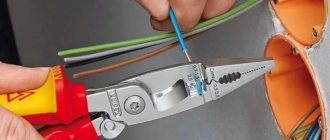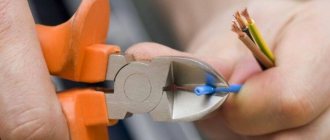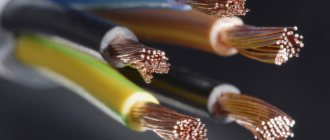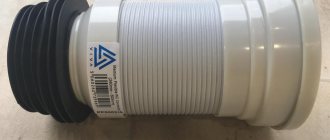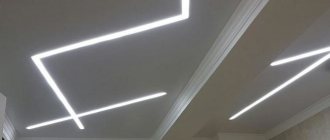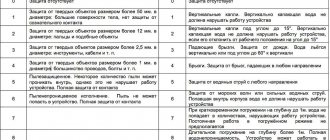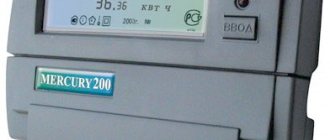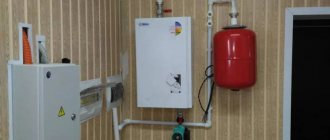Carrying out electrical work at home - be it laying or completely replacing electrical wiring in a house or connecting just one lamp in a new place - is inevitably accompanied by the need to remove the electrical insulating sheath from the ends of the conductors. Let's look at how wire stripping should be done correctly and what will happen if you do it without a special tool, what types of special tools there are, what are the features of the elementary and professional approach, as well as what criteria you need to pay attention to when choosing a particular method and tool in specific conditions .
A special tool allows you to clean the wire from the sheath without damaging it Source 5watt.ua
Stripping wiring - features of using special tools
How correctly the connection of electrical wiring elements is made will determine not only the quality of the power supply, but also the safety of the home. Therefore, when carrying out electrical installation work, it is extremely important to use special devices for stripping insulation from wires.
Removing the insulating shell without the use of special tools can result in the following series of undesirable consequences:
- Damage to the electrically conductive metal core or hairs, which will inevitably result in a reduction in cross-sectional area. Subsequently, this can lead to breakage and breakage of the circuit, and in the worst case, heating and fire.
- The formation of hidden defects, which will subsequently lead to the core breaking when bent.
- Reduction in conductor strength due to defects in the structure.
- Breakage of side hairs in a multicore cable.
- Clogging of the conductor surface with insulation material residues.
In addition, removing the electrical insulating sheath using special tools allows you to avoid injuries to the installer himself, as well as improve the quality and productivity of work. This is especially true when a large number of connections are being made, for example, when installing wiring in a new home.
Why do you need to remove insulation?
The insulating layer is usually removed from wires for the purpose of replacing or updating the connection. There can be quite a lot of cases for this. It is especially common to expose the ends of wires when replacing switches and sockets. Connecting some electrical devices also requires a direct connection to the network backbone. And this leads to the need to strip the wires.
Wires without insulation
Sometimes you have to replace the old protective layer. Then the old base is removed and replaced with a new one. Oxidation of the wire may remove the damaged area, which requires reconnection. Need to increase cable length. In each of the presented cases, the presence of bare ends is required, which will later be connected to the same parts of another conductor.
You may be interested in Checking the network voltage
Types of instruments
Modern tools used for stripping wires and cables are classified according to several criteria:
- Method of removing the shell.
Two methods are used - thermal and mechanical. The first is typical for conductors with a small cross-section and a small amount of work, the second - for professional maintenance and a large number of operations.
Depending on the method of influencing the shell material, mechanical methods are divided into two types:
- Cutting. The cutting edge of the tool carefully cuts the sheath around the metal core, after which a smaller part of it is simply removed from the edge of the conductor.
- Break. Using special teeth, the conductor is clamped in the working part of the tool, and then the sheath is forcefully torn off along the conductor.
The choice of method and type of tool is primarily determined by the cross-sectional area of the conductor, complexity and volume of work.
- Operation speed.
According to the parameter of the number of shell removal operations performed in a certain period of time, tools are divided into 2 categories:
- Household. These include electrical knives, side cutters, and pliers. The devices are designed for stripping wires with a small amount of work.
- Professional. These are primarily strippers, tongs, pliers and pullers. They make it possible to quickly strip the conductor sheath.
A knife is most often used in everyday life due to its availability, ease of use and low cost.
- Degree of automation.
According to the degree of automation, devices are divided into manual, semi-automatic and automatic. This classification is typical primarily for professional instruments.
An automatic stripper significantly increases the productivity of conductor stripping Source remitek.ru
On a note! Cleaning tools can be either universal or special purpose - for example, only for an Internet cable or power wire. They may also differ in the diameter of the conductor. The most popular models are for cores with a diameter of 4 to 40 mm.
See also: Catalog of companies that specialize in engineering systems (heating, water supply, sewerage and others) and related work
Elementary cleaning methods
There are two main ways to quickly clean wires or cables of insulation - by heat treatment or firing and without heating, that is, mechanically. Each of them has the following characteristics and scope of application:
- Thermal.
The method involves heating the edge of the conductor to a temperature when the material of its electrical insulating shell begins to melt or burn. If the area that needs to be stripped of insulation is large enough, not the entire section melts, but only the area to which stripping needs to be done. Then the remainder is removed from the edge with pliers.
For heating, 3 devices are used:
- Soldering iron.
- A lighter or other open flame source.
- Hot nichrome thread.
The method is good for a small amount of work and is used to remove insulation from thin wires designed to transmit voltages of no more than 5 volts. Since such wires are easily damaged by a knife or other tool.
- Mechanical.
The method involves cutting the insulating shell with the cutting edge of a sharp hand tool - for example, a knife. A special electrical installation model or a homemade one made from a hand-saw blade can be used.
The cutting technique should be performed in such a way that the surface layer of the metal core or hairs is touched as little as possible. To do this, the tip of the cutting part is directed at the most acute angle possible with respect to the shell. The method is suitable for small or medium volumes of work, provided the craftsman has sufficient experience, and when the shell is made of PVC or rubber.
The electrical installation knife has a special handle made of dielectric - for working with live wires Source inbenzo.ru
Using a professional tool
For a large volume of electrical installation work, there are 4 main types of special tools that allow you to quickly and without damaging the wires strip the insulation from the wires:
- Nippers and pliers.
These are quite versatile and easy-to-use devices for cutting sheaths on both wires and cables. To strip, select the desired diameter along the conductor, then grab it and twist it around. After this, the sheath is simply pulled off the end of the wire.
Advantages of the device:
- Reliability.
- Possibility of cleaning in hard-to-reach conditions.
- Long service life.
- Working with live wires.
The disadvantages are associated with the impossibility of adjusting the tool to the length of the layer being removed and the need to reconfigure it for different diameters.
- Wiring knife.
Traditional device for quickly removing the casing. Mainly used for working with flat cables. The insulation is cut away from you with a knife. In this case, the cutting part of the tool should be directed at an acute angle to the material.
The knife for stripping cables has a specially shaped blade. Source remoo.ru
Advantages:
- Versatility - fits any wire.
- Affordable price.
- Availability of specimens with a handle covered with electrical insulation, which makes it possible to work with live wires.
Disadvantages are associated with the duration of the processing process, labor intensity for large-diameter conductors and the need for experience, without which metal conductors can be damaged.
- Stripper.
A professional tool specially designed for stripping wires of insulation. The operating mechanism is based on passing the conductor through a pair of movable semicircular working elements. The accuracy of the cut is determined by setting the device to the cross-section of the core.
Depending on the conditions and scope of work, 3 types of stripper are used:
- Manual.
- Semi-automatic.
- Auto.
Some models, in addition to the main task, allow you to crimp, trim and twist conductors.
A professional stripper is best designed for quickly removing insulation from wires Source ytimg.com
Criteria for choosing a tool and method
When choosing a device or method for stripping a cable, it is important to take into account not only the amount of work to be done, the experience of the technician and financial capabilities, but also the following features of the conductor sheath materials:
- Coaxial wire. The upper shell is removed thermally, the lower – with a stripper. Other methods may damage the load-sensitive conductors.
- Cable with fluoroplastic insulation. The shell is highly heat resistant. Therefore, mechanical methods are better suited for stripping - with a knife or stripper.
- Wire with enamel protection. When the core cross-section is small - no more than 0.2 mm² - the thermal method is used.
Advice! When choosing a tool for removing the sheath from a conductor, it is important to consider the range of working diameters and the type of handle material. If work with live electrical wiring is expected, the handle must be made of dielectric.
Which stripper is better to choose?
You should not choose a tool only for its intended purpose; perhaps it can perform the functions of another; you should definitely choose a stripper according to the required conditions.
Likewise, if you use it rarely, it would be a good idea to think about the price range of the stripper you are purchasing, since in this case it is not necessary to buy an expensive tool.
However, if a stripper is required for daily work in the field of industrial electrical equipment, the best choice would be an automatic or multifunctional stripper, while for home work you can get by with a manual or semi-automatic type.
The choice is also influenced by the material, which one tool can handle easily, while another may have difficulties.
Briefly about the main thing
The use of special tools for cleaning conductors from the sheath allows not only to increase the speed and quality of work, but also to avoid a number of negative consequences:
- Core damage.
- Hidden defects.
- Reduced wiring strength.
- Breakage of individual veins.
- The conductor is clogged with insulation material.
Modern peeling tools are classified according to three criteria - removal method, speed and degree of automation. Elementary methods at home allow you to remove insulation by heating or using a knife. For large volumes of work, special devices are used - wire cutters and pliers, electrical knives, strippers, side cutters and pliers. When choosing a method and tool, among other parameters, it is necessary to take into account the type of shell material.
Photos of strippers
1+
Read here! Current clamp meters - main types, basic design and tips for use (85 photos)
